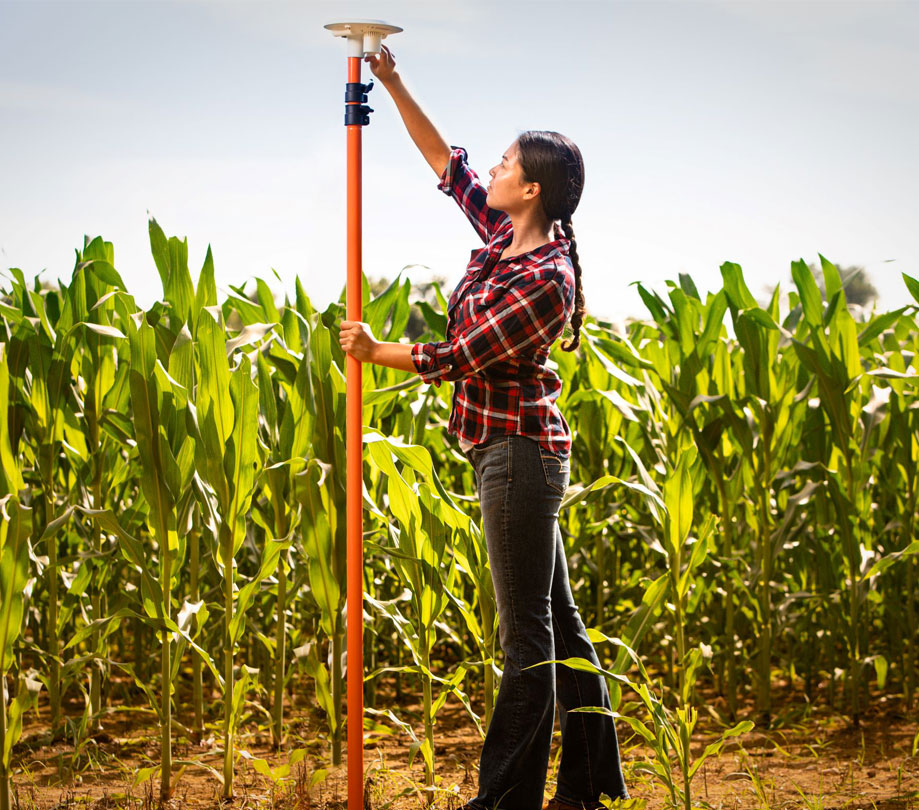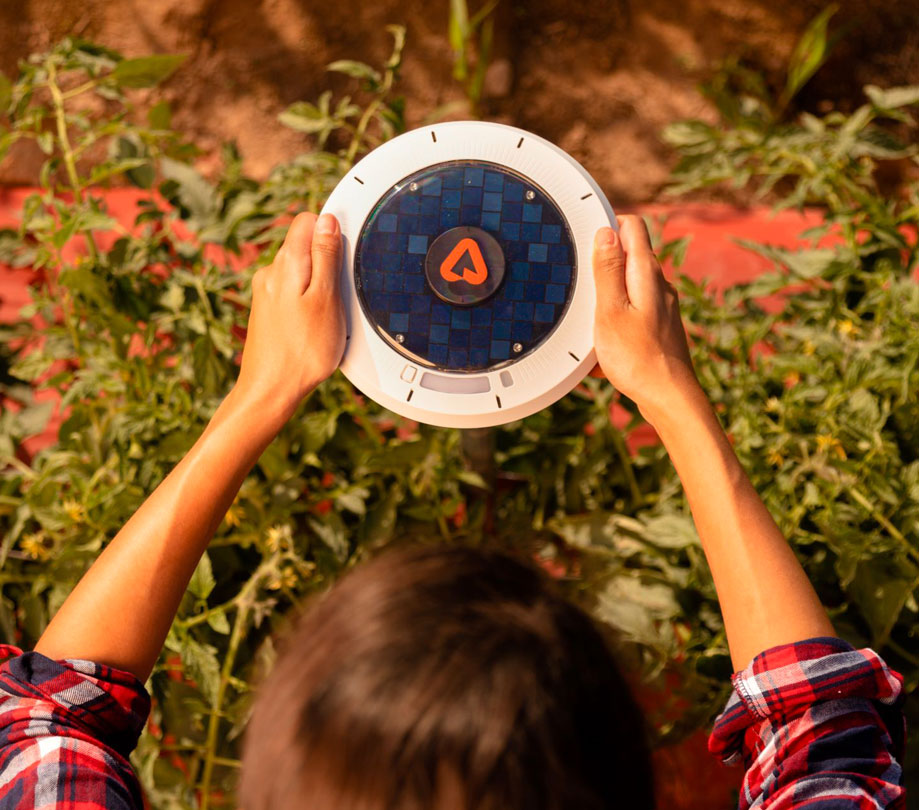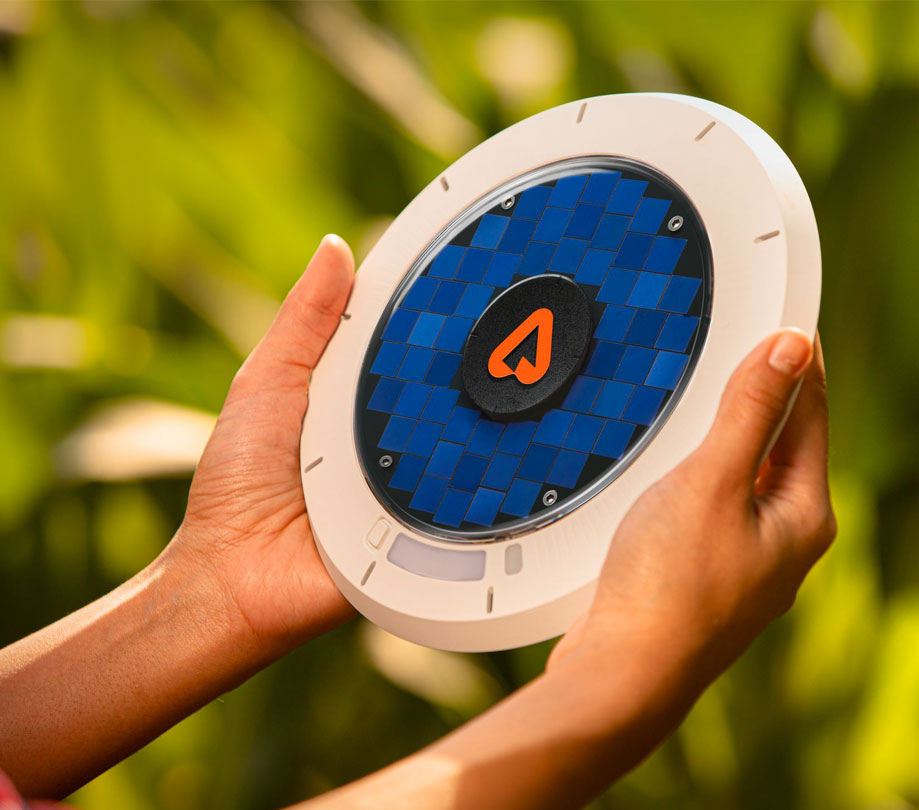Data-Driven farming gets a huge shove forward
Sunday, March 15, 2020

|
Brittany Hainzinger |
Agriculture touches every person on the planet. It’s an industry that employs more than a billion people, generates 10% of the world’s GDP, and feeds 7.5 billion people. However, the World Food Program expects extreme climate change events like droughts, wildfires, and storms to endanger food security for billions of people. Already, 10 million people die from hunger-related diseases each year. By 2050, crop yields are expected to fall by as much as 50% compared to 2000 levels. Despite improvements in technology, farmers aren't growing more-- yields have been flat for the last 30 years. Agriculture has to improve exponentially if we're going to survive collectively. I’m reaching out on behalf of Arable Labs, an IoT startup working on this exact problem.
At a moment when pressures around climate resiliency, mitigation, and adaptation are revealing the urgency for thoughtful and efficient land use, Arable Labs, Inc., has unveiled a suite of tools that offers a solution to this crisis affecting humans and ecosystems across the globe. Pioneers in innovative agtech, Arable has built the latest technology—impossible even a few months ago—to help agricultural producers who want to manage their fields with high-quality, localized data and insights forge a path forward and thrive in this new ecological paradigm.
Already trusted by hundreds of partners in the agtech industry for their breadth of unique data and easy-to-use analytical tools, Arable has helped thought leaders in 37 countries across 6 continents—including BASF, Netafim, Treasury Wine Estates, Ferrero, and Mars—start to build a sustainable agricultural future based on field data and analytics. "My day started with Arable and my day ended with Arable. It was the bookend of every day," noted Arable customer Chuck Dietzel of Carolina Hemp, a seventh-generation farmer in South Carolina, USA. Now with the release of a suite of new agricultural tools, they are poised to turn the page on a new chapter for agtech.
“Our mission is to empower people to make effective decisions around natural resource use through data and science,” says Arable CEO Jim Ethington. “Building on this strong foundation, we are using the very cutting edge of technology to help people working the land who face these decisions every day under increasingly volatile conditions. In the face of a changing climate's pressure on agriculture, Arable is reinventing the way that data is made useful to farmers."

The Game Changer: Introducing Arable
In the most recent decade, about 23% of anthropogenic greenhouse gas emissions have derived from agriculture, forestry and other land use, which places it just under electricity and heat production (25%) and ahead of industry (18%). At the current rate of emissions, poor water availability and elevated ozone levels are projected to cause global vegetable and legume yields to fall by 35% in the next 80 years. Every degree Celsius increase in global temperature correlates to a 5-15% drop in overall crop production. Climate change is pushing Cabernet Sauvignon out of Napa. While we have developed an array of resilience strategies in recent years, each depends on having accurate and current information to act, and strategies for how to use this information.
The answer to this problem lies in data. Data collected across the agricultural supply chain, digested and distilled with useful analytics, is the most powerful tool we have to adapt to our new conditions and mitigate their harmful effects on our economies and wellbeing. This is the driving force behind Arable’s mission, and what compelled them to build their new suite of agronomic solutions. Building on the success of the original Mark device and Insights platform, Arable sought out feedback, pain points, and ideas from early adopters to understand what was missing, and challenged their engineers and scientists to test the limits of what was technologically possible. The result is shown in Arable’s unique approach to climate and plant science: it bridges the gap between measurements and models, going beyond their flagship device to incorporate deep machine learning, robust data science, and weather model and remote-sensed data fusion to fundamentally reshape the way we address the most important challenge of our time. “There are a lot of new technologies out there,” said Dubi Raz, Global Agronomy Director for Netafim. “But Arable is real.”
At the center of Arable’s innovation is the Mark 2, the world's most advanced all-in-one weather station, crop monitor, and irrigation management tool. Invented by agronomist Dr. Adam Wolf and designed in partnership with legendary product designer Fred Bould (Nest, GoPro, Roku), the Mark 2 is a solar-powered IoT device that synthesizes both climate and plant data to produce actionable insights for all growing conditions around the globe. The Mark 2 features more than 30 enhancements, including improved sensor accuracy, expanded cellular connectivity, extended battery life, and a protective UV coating to withstand extreme temps and harsh environments. The device installs in minutes, deploys with the push of a button, and requires no maintenance.
The device measures over 40 elements, including rain, solar radiation, canopy cover, crop water demand, environmental stresses, and microclimate indicators. By sensing the temperature and spectral conditions of the crop, Arable can determine not only how rapidly the crop is growing and it’s the current growth stage, but also how stressed the crop is and in many cases the cause of that stress. Hourly water stress based on a comparison of the crop’s temperature and that air temperature shows whether the plant has enough water available, allowing producers to streamline their irrigation plans and link decisions to outcomes for effective land and resource management.
In addition to measuring the crop and environment, Arable’s solution also integrates with third-party data to provide hyperlocal weather forecasting and enhanced satellite imagery. In weather forecasting, Arable uses the measurements on the ground to augment global forecast models to make each forecast specific to the grower’s field. Today, most weather forecasts operate on large grids, up to 60 miles across. Given the differences microclimates create for each location, this is not specific enough for reliable decision making. By taking the best forecasts available, adding accurate, continuous ground truth data, and using machine learning models that improve over time, Arable is able to create a new level of accuracy in predicting key weather outcomes that improve on current forecast accuracy by over 30%.
While satellite imagery has long been used in agriculture to monitor fields, there are two main challenges to using this data for decision-making on the farm: the images aren’t that frequent, and when available, they can be dependent on good light conditions and unreliable due to interference from clouds. Arable solves this problem by taking zero-interference measurements directly above the plant canopy, with the same types of sensors deployed on satellites, at five-minute intervals. These measurements are then integrated on the full spatial scale of the satellite to provide reliable recommendations that take into account every corner of a growers field and every key event of the growing season.
Arable has also pioneered a new method of connectivity that delivers unparalleled simplicity and reliability. Taking advantage of new cellular technologies that are part of 5G, Arable’s solution connects to existing cell towers—no complex local radio networks to manage—and it does so at a range six times greater than that of a typical cell phone. In North America, this allows potentially 95% of farmland to connect simply and easily, compared with an average of 60% today. In countries like Brazil, this is an even bigger advancement, as it will move the ability to connect fields from 7% to 70%—and that number will only grow in the coming years with additional investment in cellular infrastructure.
Depending on how it is managed, land—and by extension, human activity on it—is simultaneously a source and a sink of atmospheric carbon, a significant driver of climate change. In this context, making responsible land-use decisions in agriculture is increasingly challenging. Providing better data, analytics, and decision tools presents the opportunity to help make our food system more resilient and gives us a greater window to adapt our practices with confidence. Through intimate knowledge of what's happening in the field, the Mark 2 and its data suite help producers land squarely where they need to be, at the vanguard of sustainable management operations, optimizing food production for today’s growing population while preserving natural resources for future generations.

All Your Data in One Place: Introducing Arable Bridge
In addition to the intelligence created by Arable’s sensors and system, when deployed in a field Arable also serves as a platform to connect and make useful familiar third-party sensors. One of the biggest challenges in agricultural technology is that there are too many disconnected systems to use. By tying Arable’s data together with sensors like soil moisture probes and irrigation flow rate sensors, Arable puts all key data about the growing season in one place for the first time. The result is simplicity in the field, data in context for better decisions, and a lower cost. Arable does this through Arable Bridge, an intuitive and easy-to-use way to collect data from auxiliary sensors and seamlessly integrate it into the Arable platform for useful, real-time analysis. The advantage of such a simple system gives individuals and enterprises flexibility and deep insight into their crop health and quality, all in one place.
A World-Class API: Introducing Arable Open
Open, Arable’s API 2.0, allows platform users to contribute to, edit, and collaborate on one of the most elegant agricultural software solutions available. Arable Open was designed for interoperability, meaning the data can be integrated into a wide range of digital farming platforms, already in use with BASF’s xarvio™ FIELD MANAGER and Netafim’s NetBeat™. Arable understands the importance of farm data as business intelligence and decision-making tools for the grower and their trusted partners, and prides itself on a strict data privacy policy that supports the farmer at its very core.
Weather & Crop Insights in the Palm of Your Hand: Introducing Arable Mobile
The Mark 2 launch coincides with the release of Arable Mobile, bringing the insights of Arable’s software platform to an intuitive, user-friendly mobile app. Users can access data collected by Mark 2 devices across their operation anytime, anywhere. Mobile features decision tools such as irrigation insights (water demand, precipitation, and ETc in daily and weekly amounts), in-field weather (including frost alerts, heat spikes, forecasted 24-hour low & high temperatures, dew point, and humidity), and disease risk (field wetness, past 24 hours of surface wetness, past 48 hours of precipitation, and a rain forecast). “The remote ability is huge for me. I do not want to drive out there, or send someone out to the field every day just to make sure the data is collecting,” said Evan Derdall, Biosystems Engineer ar Agriculture and Agri-Food Canada.
Read more: https://www.arable.com

Become a subscriber of App Developer Magazine for just $5.99 a month and take advantage of all these perks.
MEMBERS GET ACCESS TO
- - Exclusive content from leaders in the industry
- - Q&A articles from industry leaders
- - Tips and tricks from the most successful developers weekly
- - Monthly issues, including all 90+ back-issues since 2012
- - Event discounts and early-bird signups
- - Gain insight from top achievers in the app store
- - Learn what tools to use, what SDK's to use, and more
Subscribe here




_cptybzmh.jpg)








